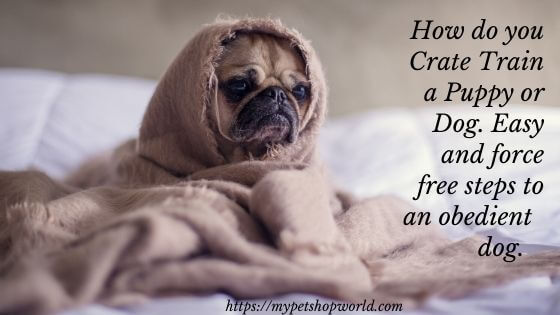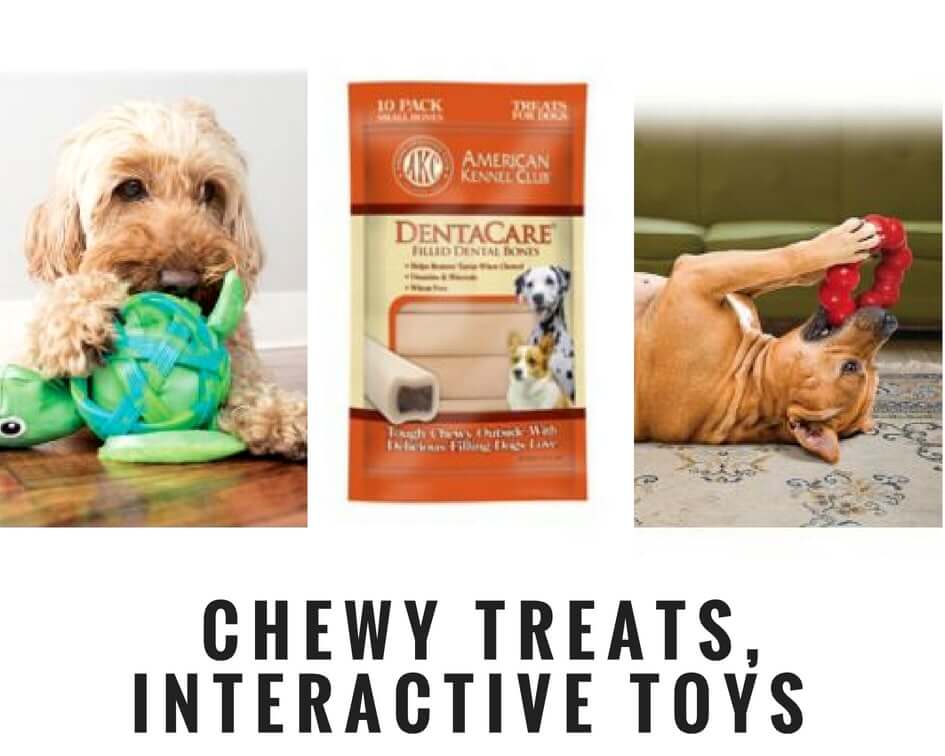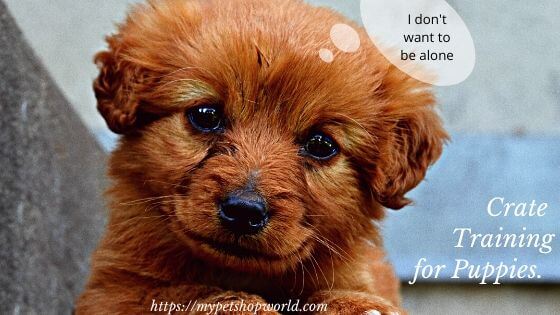How To Crate Train A Puppy?
When you decide to introduce a new member, like a puppy, to the household, you need to decide on who is doing the training with the puppy. Especially when you decide to use a crate for your puppy. So how do you crate train a puppy without the feeling you put a puppy into a cage.
Puppies and dogs should go through a training program with you, and this is important for you and your puppy or dog to get to know each other and form a bond. Bonding is essential for a good dog and owner relationship.
Read my blog Tips for first-time dog owners.
Crate Training for puppies or dogs is different and it can take a while to accept that your dog or puppy likes the crate and you have to move away from the thought that a crate is a cage.
Crates for dogs are available in different shapes and sizes and some are really beautiful and fit easily into your home without spoiling the interior look.

The second step…Do you want to crate train your puppy?
The idea behind crate training is to give the puppy a place where it can feel safe and relaxed. It is a puppy’s den like a safe nest. The bars to you look like a cage, your puppy has a different perspective on it. Your puppy sees a warm and cosy cave where it feels safe and he will sleep and feels comfortable in it. Dogs need a safe area where they can go to when they feel insecure. (Keep your dog safe with fireworks. )
Download our free ebook “For the love of dogs ” Click here

Keeping your puppy safe with Crate Training.
If you are a first-time pet parent than you should know a crate is actually a safe place where you can keep your puppy safe from household hazards. I know that look, but every experienced pet parent knows a puppy can do and will destroy everything it can bite, chew, tear, rip or what so ever. Nothing is safe. Not even your shoes…
Our puppies, when they are young, ate and chew all the shoes most of the time they chew the heel off.
Crate training will also make the potty training of your puppy easier.
You have to see it in a different way, you are not using a crate to punish your puppy or dog. You do not abuse the crate in a way where he is locked in permanent no you are using it to give it a place where he can withdraw and feel safe and comfortable. There are lots of household hazard in the house and crate training is a practical decision. (read my blog how to successfully potty train your puppy)
Question: Is crate training cruel … I don’t want to lock my puppy in a cage.
Answer: No it isn’t. When it is done in the right way the crate training is a great way to keep your puppy safe. You have to change your perspective it is not a cage unless you plan to lock your dog in there for 8 hours and more.
Plan Ahead and decide on the size of the crate for your puppy or dog.
Before bringing the puppy home make some preparations.
First, choose the right size crate for your puppy. Consider the breed and the size when your puppy is fully grown.
The crate should not be too big. Consider that during the puppy grows you might have to change the crate to a bigger one. So don’t spend too much on it. (Crates to consider)
You can resell that crate at a later time or pass it on to a pet shelter. The puppy also needs a bed. It is essential to buy for your puppy a super comfy bed, and a water bowl.
Note that the puppy should be standing up without banging his head when he tries to drink from his water bowl.
Ideally, the crate should be big enough that the puppy can turn around easily and lie down with his legs stretched out.
If you can get hold of a blanket that he used before or smells of the mother dog. If the puppy is a shelter dog please ask the shelter to give you the blanket he used before. ( do not wash the blanket)
Place the blanket inside the crate before he comes to his new home. The smell of the blanket will give him comfort and security when he arrives in his new home.
There are different crates available in wood what fits your furniture or wire crates.

Find a good place and decide where to put the crate.
You have to decide on a place for the crate. You can not continuously move the crate around. It has to stay there so if you live in a 4 season country think about it, in summer it should be cool and in winter warm.
You have to find a place where the crate is connected to the family. Do not put the crate into an isolated area, your puppy will not be happy and properly will avoid the crate. ( Brain training for dogs, train your dog at home)
A puppy or a dog want the connection with the family but said this make sure the place where you put the crate is also not too noisy or busy, a place where the puppy or dog can rest quietly.
Putting the crate in a corner of the lounge room is a good idea, where your puppy can see the family watching TV but he has his own space.
I would not recommend the laundry room, as your puppy might than avoid the crate and will never go in the crate willingly. Remember it should be a place that your dog or puppy feels safe.
Download our free ebook “For the love of dogs” Click here

He might also bark as your pup can not see you. Be aware puppies are scared easily and being alone in the laundry room when the spin cycle goes on from the washing machine or the dryer might frighten him. Choose an area what is comfortable and not too far away from the family interaction.
Puppy Crate Training Do’s and Don’ts
OK, here are a few basic ground rules about crate training.
- DO: Encourage your puppy to explore and discover the crate. What this means is hiding tasty treats and special toys or chewy bones inside the crate.
- DON’T: Never force your puppy inside, never push or do it in an angry motion.
- DO: Praise your puppy when your puppy goes into the crate or sits in the crate without winching and winning.
- DON’T: It hard as it sounds, Do not let your puppy out when he’s crying, he will see it as a reward for making noise and he will use it in the future.
- DO: Remember to take things slowly. Take it step by step and extend the amount of time when your puppy is left in the crate. Please consider do not leave the puppy in the beginning for hours in the crate start with 30 minutes and extend step by step in 30 min training from days to days.
- DON’T: Never use the crate as a place of punishment. Never leave him in there for hours and hours.
- DO: Put some blankets into the crate from the mother dog so he sees it as a place of comfort, he will remember the smell of the mum. ( If you do not have, a comfy dog bed and a Tshirt of yours will also work. )
- Do: Keep the crate clean from food and if your puppy pees in there clean it up thoroughly.
I like to comment here before you buy an expensive dog from a breeder please think to adopt a dog. ( Soi Dog Foundation)
It is time getting started with Puppy Crate Training.
So you already put the few tasty treats chewy bone and toys into the crate. Now show your puppy where they are. Now when your puppy is not looking take the chewy bone, move it hide it in another place. The same goes for the treats hide them in a different place of the crate.
The whole idea behind this exercise is that your puppy will link the crate to discovering the treats and snacks. You will see that every now and then your puppy will break off from play to walk into the crate if there are more treats your puppy haven’t discovered yet.
For your puppy, it is like magic.
A good idea is to put his favourite toy into the crate. Sit with your puppy and play with him when he is inside the crate ( of course with the door open) change the toys around so there is always something new to discover.
Puppies love to chew, buy a new chewy bone put it in the crate and make him look for the bone. Dogs love this challenge.
How many times they bury their new bone in the blankets for later joy. A crate can when done right a real joy and safe haven for puppies and dogs.
If it happens that your puppy poops into the crate do not shout and get upset, be calm remove it and praise him for it. Don’t praise him too much as he might change it and do it each time just to get attention. That is exactly what you don’t want.
Be aware after eating puppies normally want to poop so bring them outside to their spot for doing his business.
Try feeding your puppy in the crate. While things pick up the pace eating is a distraction briefly shut the door and leave it closed 2 minutes and then open it again. If it went well gradually extend the amount of time with the door shut.
Remember your puppy will be distracted while eating and not notice that the door is shut. If he looks up and is quiet praise him if he starts to whimper ignore him.

Soon as he whimpers stop and praise him then open the door. Your puppy is learning that good, quiet behaviour is getting rewarded and that crying and winching gets him nothing. Brain training for dogs. Best way to train your dog now.
Dogs learn fast and can turn the training into a challenge, just make sure that you train your puppy and not the other way around that your puppy is training you.
With time your puppy will become more relaxed and accepts the closed door. Move away a little bit from the crate. Praise him for his good behaviour and let him out once he is calm. Go step by step moving away further and increasing the minutes the puppy is in the crate.
As the training progress starts to leave the room and only return when your puppy has calm down again. It takes patience and endeavours to train a puppy and there will be ups and downs. Never train a puppy if you do not have enough time to go through the process. Rushing a training session will backfire on you.
A Reminder On How Long To Leave Your Puppy In The Crate
Keep the crate confinement short and sweet at a few minutes and gradually build up the time. I can not stress this often enough do not train your puppy if you are in a rush. Dogs will pick up on that energy and will be reacting to it.
When your puppy has settled down and is asleep in the crate remember do not overstep the time mark and leave the puppy to long in the crate. If he is asleep then leave the door open.
Here is a little advice on how often a puppy needs to go to the toilet. A puppy can only hold his toilet so many hours as his age in a month plus one. Read my blog How to successfully potty train your puppy.
Use this as a rule of thumb. Sorry if I confused you. Say your puppy is 3 months old so that means your puppy can hold his toilet a maximum of 4 hours, and a 4-month-old puppy can hold his toilet a maximum of 5 hours.
( unless your puppy is sick with diarrhoea) whilst a four-month pup can hold a max of five hours.
Please do go regularly to the vet and give your puppy all the vaccinations.
Download our free ebook “For the love of dogs ” Click here

A puppy is a puppy a loyal living being…
One big BUT to consider… A puppy needs a lot of time, love, attention and stimulation. A puppy should also socialise with other dogs and puppies.
Do not leave a dog any dog or puppy unattended in a crate for more than 4 hours at a time. You want your puppy to love the crate and not start resenting it. A puppy left to long along can develop separation anxiety.
Having a puppy is a responsibility and a puppy loves to chew things so be prepared. Do also regular check-up with the vet so that your puppy is wagging his tail by having a healthy and happy puppy.
A puppy will grow up and will be a dog, it is like a child becomes an adult. Don’t buy or get a puppy if you can not commit yourself to the lifetime of a dog.
Dogs depend on the breed can become quite old. Some dogs can have an old age up to 23 years.
Our family dog a mix match was 26 years old when he died. I will never forget him, he was a loyal companion to us kids and I loved growing up with pets.
Conclusion:
Remember that taking your puppy out for a walk before and after time spent in the crate will allow your puppy to get rid of the excess energy and will help with housebreaking.
Puppies should not have a collar for walking with a leash, use a harness that is a much better solution and you can control your puppy better without your puppy getting hurt.
A fact is that dogs do not go to the bathroom in the same place or spot where they eat and sleep. Leave your puppy only in a crate for as long it can hold his bladder or poop.
Remember the rule of thumb. (Puppy age in the month equals hours plus one) When your puppy is out of the crate immediately take your puppy to his special potty spot.

Praise your puppy for doing its business and give it treats to reward its behaviour. Dogs especially puppies are smart and quickly associate good behaviour with rewards. Brain training for dogs. The best training to train your dog at home,
Older Dogs can spend four to five hours in their crate, while puppies under six month should only be in the crated for two hours maximum.
Longer hours in the crate could lead for puppies and adult dogs to anxiety, depression and discomfort. It is important to differentiate your dogs whining between whining for attention or whining for going to the bathroom.
Even when a puppy or dog is comfortable in their crate it does not mean you can skip their walk. That all depends on your puppy and your last feed and walk. If it becomes 2.30 a.m walks get a potty train green grass indoor mat.
How do you crate train a puppy or dog is important as this will reflect later in his adult stage. Crate training can be a very pleasant experience but as said before do not forget to socialise your puppy with other dogs and puppies it is an important lesson for your puppy to learn to get along with other dogs.
All Yours
Melanie
Download our free ebook “For the love of dogs ” Click here

Puppies are very loyal from the beginning. I love puppies a lot. I pass my leisure time with my Russo. He gives me much pleasure. The thing is you have to train your puppy properly.
Hi
Thanks for your comment. I can not agree more with you that puppies are playful and need to be trained. It is cute in the beginning when everyone laughs about it, but when it becomes a problem people seem to understand that a puppy needs rules and training. Without it, you just get yourself into stress in understanding your dog.
I have great training from a dog expert and it is easy to follow and puppies and dogs love it.
Brain training for dogs
have a great day
Melanie
That’s a good idea to make sure that they socialize with other dogs. I would think that could solve some issues with fighting later on. I’ll have to consider getting my puppy trained with some other dogs.
Hi Tyler
It helps a lot socialising a puppy. One thing your puppy will learn is where are his borders interacting with other dogs.
People tend to keep puppies on their own instead of letting him play with other dogs. I go on a regular base with my dogs to a dog park and my dogs they do look forward to it. They recognize the way we drive when we are in the car they get excited, but before I let them into the dog park I make sure they calm down.
Here is a great dog training
Have a beautiful day
Melanie
The basics of crate training a dog will require patience, the correct size crate for your dog’s build, a few toys and a lot of praise. Crate training a dog may be done for many reasons with one being safety for the animal while it is left alone. A crate should be a secure feeling place for a dog and should never be used as a punishment.
Dear Steve
Crate Training is not for every Dog. Some dogs like it and some don’t. I had dogs who loved their crate and dogs who hated the crate.
In anyway dogs have their preferences too.
Like you repeat a crate should not be a punishment. Dogs are family too.
Have a beautiful day
Melanie